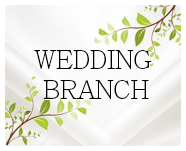When planning a wedding there’s no doubt about it, in this day and age more and more couples are choosing to write their own wedding vows rather than follow the traditional verse. If you’re a modern man or woman, it probably makes sense, with the traditional vows perhaps being a bit too traditional in their tone, while many couples like to tailor their words to their partner in a more personal manner. With that in mind, here are a few tips!
Read Wedding Vows Online
We don’t mean the traditional words – though they could help too – but vows written by other modern couples! You can either watch them on YouTube or have a read through a variety of wedding sites. Certain phrases or ideas might be too good to pass up!
Agree on a Tone
This is a must because you don’t want to exchange vows for the first time at the altar, with one of you opting for a deadly serious tone and the other joking about the hilarity of the first date jitters. Pick a tone between you and stick to it. References to parts of the relationship are a nice idea, but ensure that you aren’t saying things to one another that your partner doesn’t want to be heard in front of friends and family…
Have a Ponder
What makes your relationship special? How do you view the person that you’re going to marry? Can you explain how they make you feel in just three words? What inspires you? What are you going to accomplish together? What difficulties have you faced as a couple? What does the future hold? These are all questions that can help when it comes to writing your wedding vows. Write the answers and then combine these thoughts into something coherent for the big day.
Think of a Promise
If you decided to google ‘define vows’, you’ll find that a vow is described as ‘a solemn promise’. As such, your vows shouldn’t just be a vivid description of how much you love the person in front of you but a moment to promise something to them, throughout your forthcoming wedded lives. “To love and to hold…” is of course the most famous traditional line, but we think you can come up with something just as good.
Don’t go on and on…and on…
…and on. A wedding is all about two people coming together and yes, it should be a given that you love each other very much, but unless you’re a top quality poet who’s won a Nobel Prize for your grasp of literary verse, it’s often best to keep your vows short and to the point. Nobody wants to feel that the most important of the wedding is dragging on and often, shorter is better (just like the wedding speeches!) with more meaningful choice words winning out over long, rambling declarations of love each and every time.
Enjoy it!
Our final tip isn’t so much a tip as a simple hope: Enjoy it! This is the only time you’ll get to say how you feel to your partner with all eyes on you. You’re marrying the love of your life! Make it special and bask in the occasion.
Good luck!














